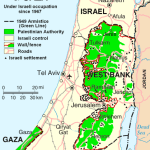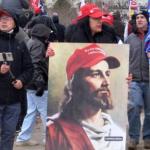35 years ago, on November 19, 1978, 73-year-old Hyacinth Thrash awoke to a nightmare in the jungles of Guyana. In one of the largest murder-suicides in world history, 918 people from her Peoples Temple church lay dead before her eyes, poisoned by a lethal cocktail of cyanide and fruit punch. The images from this gothic scene of carnage have become indelible: bodies, clad in simple workaday clothing, stretch into the distance in rows, face down on the ground. Seldom discussed and less widely known, however, is the fact that they are overwhelmingly black bodies.
Rendered “anonymous,” they represent complex extended families of children, elderly women, young women, mothers, grandmothers, aunts, sisters and nieces. They came to Jonestown, Guyana from communities all across the U.S., drawn by the utopic promise of life in a communal settlement, envisioned by a charismatic white messiah, as a socialist refuge from American racial apartheid. One of the most haunting scenes from the massacre’s aftermath is that of an adult with their arm around a child, protective in the throes of death. Thrash was the sole survivor on the premises.
Although the gruesome final snapshot of Jonestown is burned into the American popular imagination, the prelude to the massacre is not as well known. Founded by the Reverend Jim Jones in the 1950s, Peoples Temple was a multiracial Pentecostal congregation with roots in Indiana. Over the course of two decades the church would establish operations in Ukiah, San Francisco and Los Angeles before relocating the bulk of the congregation to Guyana in the late ‘70s, ostensibly to avoid government persecution for its radical views.
About 75% of Peoples Temple members were African American, 20% were white and 5% were Asian, Latino and Native American. The majority of its black members were women, while its core leadership was predominantly white. As per the cultural cliché, black women like Thrash were “the backbone” of Peoples Temple, the primary victims of Jonestown, and the population with the deepest investment in the philosophy, ethos and mission of the church.
Read the rest here















